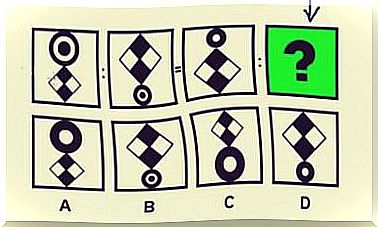The Birth Of Modern Psychometry

Modern psychology relies on the statistics of psychometrics to explain certain aspects, such as individual differences. However, do you know how this method of measuring characteristics of psychology came to be?
Much of current psychometry cannot be fully understood without first taking into account the historical context. We must then go back to the origins of psychological tests and the measurement of intelligence (1). Still, the first tests are long before you think.
Indeed, around 2200 BC, an emperor of China ordered that his officials be tested every three years. This was done in order to determine whether they were fit to perform their duties. From that point on, psychological testing continued to develop.
They have perfected over time. However, it was not until the Han dynasty (200 AD) that these procedures were fully validated.

Experimental psychology: the beginnings of psychometry
Experimental psychology begins to spread at the end of the 19th century in continental Europe and Great Britain. This is when psychology begins to move away from the subjectivism and introspection that had been the predominant model until then.
We are starting to test human capacities in laboratories. Researchers are starting to use objective procedures. But who are the precursors of these changes?
For the most part, they were well-known psychologists. We can cite Wundt, Galton, Cattell or Wissler. They have shown that it is possible to expose the mind to scientific measures. This is the birth of psychometry.
Wundt’s contributions
Willhelm Wundt (1832 – 1920) was a German physiologist, psychologist and philosopher. He founded what is called the first psychological laboratory. This took place in 1879 in Leipzig, Germany.
Wundt’s famous experiment was performed with a sort of thought counter. This instrument was a calibrated pendulum with needles protruding from the sides. The pendulum swung back and forth, striking bells with the needles. The test person’s mission was to take note of the position of the pendulum when the bells were ringing (1).
Wundt believed that the difference between the position of the pendulum observed by the subject and its actual position could provide a means of determining the speed of thought of the observer. Although rudimentary, Wundt already measured mental processes and thus highlighted individual differences (1).
It is therefore important to highlight the study of individual differences. Just as it is important to highlight the influence of early research on intelligence as precursors of psychometry.
The importance of testing
Psychological testing was also of great importance in the early days of psychometry. These tests are still used for counseling, guidance and placement purposes.
As soon as they enter the school system, many school children undergo what we might call “psychological tests”. The results of these tests can influence a person’s future. For example, a depression test can lead to a diagnosis of this disorder.
Consolidation of psychometrics
It seems clear that the consolidation of psychometrics is reflected in the start of the psychological assessment business. The American Psychological Association (APA) formed in 1895 constituted a committee specializing in the use of new measuring instrument technologies of the time.
In 1899, the president of the APA brought in psychologists to develop tests. The latter had to have certain characteristics.
The tests could be applied to both children and adults. All had the same chances to demonstrate their abilities. In order to save time, the tests were designed so that they could be implemented in a classroom or school.
For his part, the psychologist Cattell founded the Psychological Corporation for the industrial production of tests in 1922. In 1947, the Educational Testing Service (ETS) was also founded. This institution is responsible for producing standardized performance tests and academic aptitude tests.

Some magazines on psychometrics
In 1901, Weldon, Galton and Pearson founded the journal Biometrika, which publishes works related to biology and psychology. Thorndike founded the magazine Psychometrika in 1936. This publication has remained a great reference since its creation.
Since then, new reviews related to psychological measurement have appeared (1). Here are a few :
- First, the Educational and Psychological Measurement.
- The British Journal of Statistical Psychology.
- The Journal of Mathematical Psychology.
- The Journal of Educational Measurement.
- Multivariate Behavioral Research.
- The Applied Psychological Measurement.
- Finally, the Applied Measurement in Education…
Today, the term “psychometry” is the most widespread and the most general to designate the field of measurement in psychology. It is therefore the discipline that measures psychology.
It can be defined as “the set of methods, techniques and theories involved in the measurement of psychological variables” (2). In summary, we can say that it is the science which consists in measuring the “psychological” aspects of a person, such as his knowledge, his skills or his personality.










